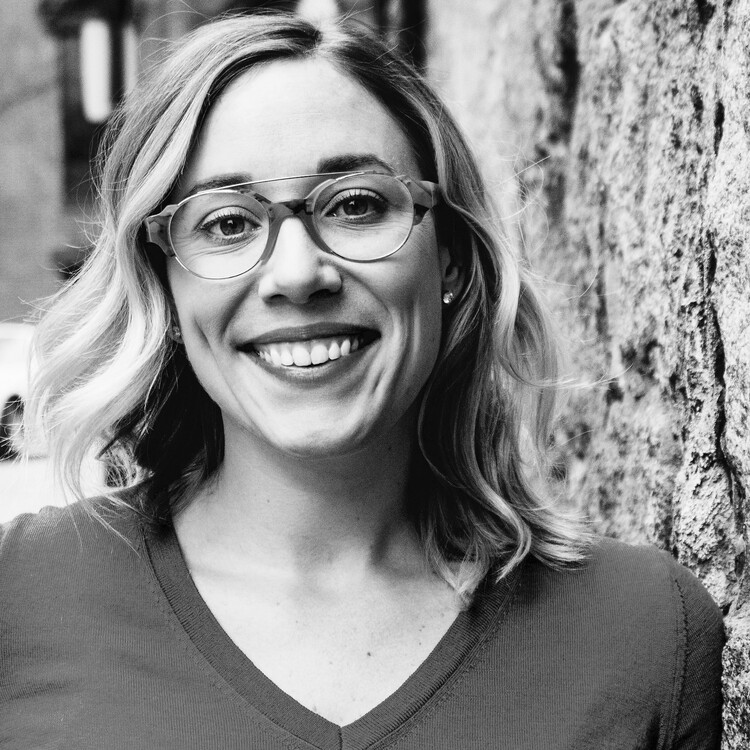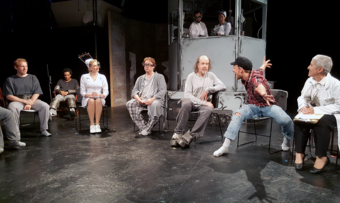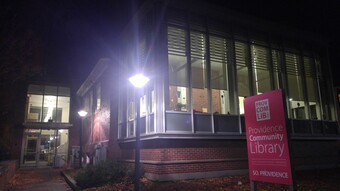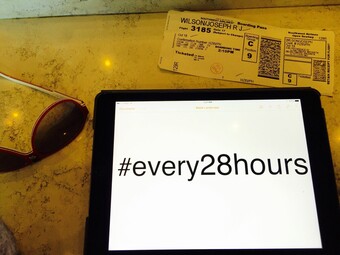Curt Columbus
In Search of the Artistic Home
Jamie Gahlon has asked theatre artists from around the country to talk about their conception of artistic home. Curt Columbus continues this series.
What makes an artistic home? An artistic home is a place where an artist can find nurture and take risk. It is a place where one can receive blunt, intense, but constructive critique, as well as new and generative ideas, generously given, wonderfully liberating, and immensely creative. Artistic home does not develop over a matter of weeks but takes years and years to take root inside the artists involved. Therefore, institutions must commit to making an artistic home a lasting place with multiple returns. This development requires casual and random contact over food, in hallways, or sometimes on the playing field (softball, anyone?). An artistic home, a true one, is always made richer and livelier by the presence of children and their incredible, life-affirming chaos. These can and should be the children of the artists involved, as well as the local community’s children, who are inevitably and inexorably drawn to any place that explores artistic potential. Like all homes, an artistic home can be filled with conflict, but at the end of the day, love is the overriding and overarching quality. (We may argue passionately, but we all kiss goodnight).
Artistic home does not develop over a matter of weeks but takes years and years to take root inside the artists involved. Therefore, institutions must commit to making an artistic home a lasting place with multiple returns.
Where and how did you find yours and what does it mean to you?
My first artistic home was “home” on an urban scale, which I encountered when I moved to the city of Chicago at the age of twenty one. I grew up there, in a community that challenged and supported me, and it’s still a place that feels like home when I return. There were so many theatres, so many artists that nurtured my growth as an actor, then director, then translator, then playwright, that I can never list them all, nor acknowledge the full extent of their impact. I continue to live a creative life shaped by that community, and I continuously put the things that I learned there into practice in my life and at my theatre. Chicago lives in a section of my heart and another in my head, always and every day.
Providence, Rhode Island, is my current artistic home, and for a city of its size, it is an extraordinarily rich one. Not only does my theatre have a community of artists, led by my resident acting company, with deep, longstanding roots, but we are also fortunate to have a vast network of visual artists, musicians, craftspeople, artistic thinkers, and others who fund our lives as artists here. Public art, large-scale and small, has become a feature of the city in the last two decades, something that draws audiences every day. As stated above, it is often the casual contacts that really define a true artistic home, and this city—this state—makes those kinds of interactions widely possible.
How can one create and/or build an artistic home for others?
Well, the real answer to that question is surprisingly simple. You create an artistic home by putting the needs of your artist collaborators ahead of your own needs or the needs of your institution, and you and your institution have to keep doing it over a long stretch of time. You commit to artists, you support their failures as well as their successes, and you put the people first, not their fame, nor their prestige, nor any other passing fad. Like family members, you love your artists for their flaws, as well as for their talents, encouraging the latter and addressing the former. You create an artistic home by playing the long game, not the short bet.
What is the artistic home of the future?
As artistic director of one of the last, long-standing resident acting companies in the American Theatre, of course I am going to say a resident company! But, actually, I fervently and absolutely believe that it is true—I feel that we are returning to the resident company model in this country, for the same reason that the local foods movement and the locally made movement are starting to take hold in the United States. Resident artists feel the commitment of a community, which makes them more deeply connected to that community, which produces better art for the people in that community and, therefore, for the entire world. Resident artists are teachers, community organizers, fundraisers, and political advocates—all things that hired guns cannot do on any deeply felt or deeply understood level. I have several resident artists in my company who have been here for over forty years, and their impact in our community is profound. In fact, with one exception, all of our resident artists have been here for over a decade.
Carbon footprint is smaller if people live where they make art; larger institutional investment goes directly to artists over time, not just to administrators and support businesses; artists can make work that speaks directly to their communities, which deepens the democratic urge and its expression; and communities will have a passionately held belief in the artists in their midst, making them better places to work, to invest, and to live.










Comments
The article is just the start of the conversation—we want to know what you think about this subject, too! HowlRound is a space for knowledge-sharing, and we welcome spirited, thoughtful, and on-topic dialogue. Find our full comments policy here